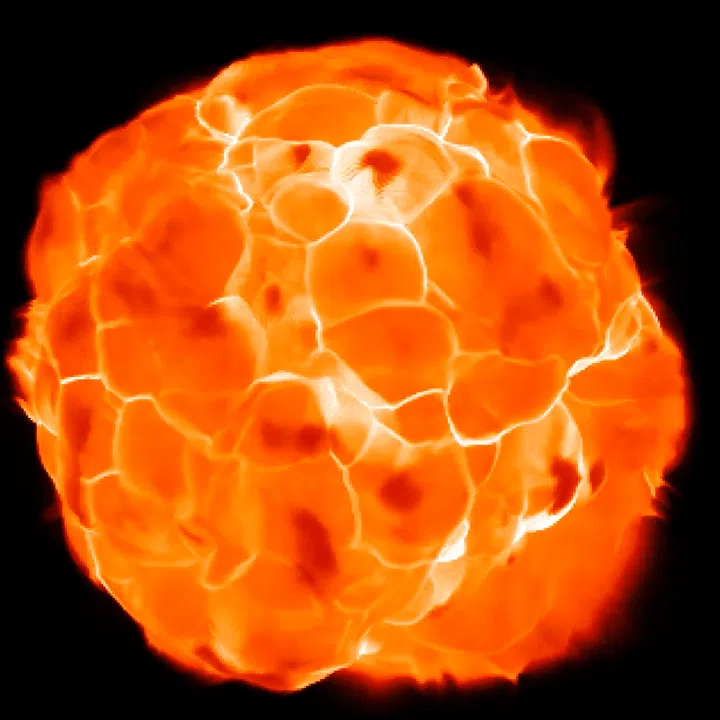Simulation of Betelgeuse's Boiling Surface: Unveiling a Red Supergiant's Turbulent Heart
Betelgeuse, the striking red supergiant in the constellation Orion, has long captivated astronomers and skygazers alike. Known for its immense size and variable brightness, it's a star constantly under observation. Recently, cutting-edge simulations have offered an unprecedented look beneath its fiery exterior, revealing a "boiling" surface that redefines our understanding of these stellar behemoths.
The Fiery Dynamics: What the Simulation Reveals
The simulation vividly portrays Betelgeuse's highly active surface, dominated by colossal convection cells. These aren't just minor ripples; these "boiling bubbles" can be as large as Earth's entire orbit around the Sun, covering a significant portion of Betelgeuse's vast surface. Imagine a single bubble on a star that could swallow our entire inner solar system!
These massive plasma currents rise and fall at astonishing speeds, reaching up to 30 kilometers per second – faster than any crewed spacecraft has ever traveled. However, it's crucial to understand that the simulation is not real-time. If it were, the surface would appear to move at speeds far exceeding the speed of light due to Betelgeuse's incredible scale. Instead, the simulation compresses years of stellar evolution into seconds, with one major bubble taking approximately 200 to 330 days (half a year to a year) to complete its cycle of rising and falling. The full simulation showcased roughly 3 to 8 years of the star's dynamic evolution.
A Star of Immense Proportions
To truly grasp the scale of what we're witnessing, consider this: Betelgeuse has a diameter approximately 764 times that of our Sun. If Betelgeuse were placed at the center of our solar system, its surface would extend beyond the orbit of Mars, engulfing Mercury, Venus, Earth, and even the asteroid belt. The visible boiling isn't just a surface phenomenon; it's a fundamental aspect of how this star transports energy from its core, influencing its pulsation periods and mass loss.

The Inevitable Supernova: A Cosmic Clock
Perhaps one of the most exciting, and often debated, aspects of Betelgeuse is its impending supernova. As a red supergiant, it's in the final stages of its life, destined to explode in a spectacular cosmic event. The question isn't if, but when. For decades, astronomers have speculated on its timeline, with many wishing to witness such a rare celestial display in their lifetime.
While the simulation doesn't predict the exact moment of its demise, it helps us understand the complex processes occurring within massive stars as they approach their end. It's important to remember that Betelgeuse is approximately 700 light-years away. This means that if it were to go supernova today, we wouldn't see the event for another 700 years. Conversely, it's entirely possible that Betelgeuse has already exploded, and its light is still traveling across the vast expanse of space, yet to reach us. From our frame of reference, however, the event has not "happened" until its light arrives.
Understanding the Giants
These simulations are invaluable tools for astrophysicists. By modeling the intricate processes on Betelgeuse's surface, scientists can gain deeper insights into stellar convection, mass loss mechanisms, and the crucial lead-up to a Type II supernova. Every new piece of data brings us closer to understanding the life cycles of stars, the origin of elements, and the grand cosmic ballet that shapes our universe. Betelgeuse continues to be a fascinating celestial laboratory, offering glimpses into processes that once shaped our own Sun and will ultimately define its distant future.




